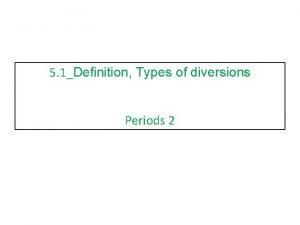Polynomia Pasttimes Activities and Diversions from the Province

























- Slides: 25

Polynomia Pasttimes Activities and Diversions from the Province of Polynomia Dan Kalman American University www. dankalman. net/mathfest 11

Reminder: What’s a polynomial?

Polynomials have ROOTS Roots are related to Factors Complete factorization …

Finding Roots is Hard … … But we can find out some things easily • The sum of the roots is 11/5 • The average of the roots is 11/20 • The sum of the reciprocals of the roots is 7/3 • We’ll get back to roots in a bit First let’s look at computation • Can you compute p(3) in your head?

Horner’s Form • Standard descending form • Horner form • Also referred to as partially factored or nested form

Derivation of Horner Form

Quick Evaluation • Compute p(2): (((5· 2 – 11)2 + 6)2 + 7)2 – 3 • Answer = 27 • Compute p(3): (((5· 3 – 11)3 + 6)3 + 7)3 – 3 • Answer = 180 • Compute p(2/5): (((5·# – 11)# + 6)# + 7)# – 3 • Answer = 23/125?

Getting Back to our Roots Coefficients and combinations of roots

Product of Roots Constant term / highest degree coefficient Example: Product of the roots is … – 3/5

Key Idea of Proof • For our example • Say the roots are r, s, t, and u. • p(x) = 5(x – r)(x – s)(x – t)(x – u) • Multiply this out to find the constant term 5 rstu = -3

Sum of Roots – 2 nd highest degree coefficient divided by highest degree coefficient Example: Sum of the roots is … 11/5 Average of the roots is … 11/20

Exercises 1. Prove the sum of the roots result 2. Prove this: For any polynomial p , the average of the roots of p is equal to the average of the roots of the derivative p’.

Reverse Polynomial • Consider the polynomial • The reverse polynomial is • Question: How are the roots of Rev p related to the roots of p? • Answer: Roots of reverse polynomial are reciprocals of roots of the original.

Sum of Reciprocal Roots – 1 st degree coefficient divided by the constant coefficient Example: Sum of the reciprocal roots is … 7/3 Average of the reciprocal roots is … 7/12

Exercises 1. Prove this: For any polynomial p of degree n with nonzero constant term, Rev p(x) = xn p(1/x). 2. Use 1 to prove that the roots of Rev p(x) are the reciprocals of the roots of p(x). 3. Use 2 to prove: if p(x) = an x n + + a 1 x + a 0 and a 0 0, then the sum of the reciprocals of the roots of p is – a 1 / a 0

Polynomial Long Division • Example: (x 2 – 5 x + 6) (x-3) • Redo the example working from the constants upward • Another example: (x 2 – 5 x + 6) (x-1) • Answer -6 – x – 2 x 2 – 2 x 3 – 2 x 4 – 2 x 5 – • Similar to the long division 1 3 to find. 333333… • Alternate form of answer: -6 – x – 2 x 2 (1 + x 2 + x 3 ) = -6 – x – 2 x 2/(1 -x) • Similar to mixed fraction form of answer to a division problem.

Amazing Application • • Start with p(x) = x 3 – 2 x 2 – x + 2 Find the derivative (Do it on overhead) Reverse both (Do it on overhead) Do a long division problem of the reversed p(x) into the reversed p’(x), working from the constants forward (Do it on overhead) • The coefficients have an astonishing interpretation: sums of powers of roots

Checking the answer • • p(x) = x 3 – 2 x 2 – x + 2 = (x-2)(x 2 – 1) Roots are 2, 1, and -1 Sum of roots = 2 Sum of squares of roots = 6 Sum of cubes = 8 Sum of fourth powers = 18 Etc.

Proof Hints • Rev p(x) = xn p(1/x) • Logarithmic Derivative: f ’ / f = (ln f )’ • If f (x) = (x – r) (x – s) (x – t) then • Geometric Series:

Palindromials • p(x) = reverse p(x) • Example: x 4 + 7 x 3 -2 x 2 + 7 x + 1 • 1 and -1 are not roots, so roots come in reciprocal pairs • Must factor as (x-r)(x-1/r)(x-s)(x-1/s) • Rewrite: (x 2 – ux + 1) (x 2 – vx + 1) where u = r+1/r and v = s + 1/s

Matching Coefficients • (x 2 – ux + 1) (x 2 – vx + 1) = x 4 + 7 x 3 -2 x 2 + 7 x + 1 • u + v = -7 and uv + 2 = -2 • Two unknowns. Sum = -7, product = -4 • They are the roots of x 2 + 7 x – 4 = 0 • u and v are given by • Our factorization is

Solve for x • Use quadratic formula on each factor • Roots from first factor are • Remaining roots are

General Reduction Method • • p(x) = ax 6 + bx 5 + cx 4 + dx 3 + cx 2 + bx + a p(x)= x 3(ax 3 + bx 2 + cx + d + cx-1 + bx-2 + ax-3) p(x)/x 3 = a(x 3+1/x 3) + b(x 2+1/x 2) + c(x+1/x)+d We want roots of a(x 3+1/x 3) + b(x 2+1/x 2) + c(x+1/x)+d Almost a polynomial in u = (x+1/x). u 2 = x 2 + 1/x 2 → x 2+1/x 2 = u 2 – 2 u 3 = x 3 + 3 x + 3/x + 1/x 3 = x 3 + 3 u + 1/x 3 → x 3+1/x 3 = u 3 – 3 u • Leads to a cubic polynomial in u: a(u 3 – 3 u) + b(u 2 – 2) + c(u)+ d

Example • Make the standard reduction • It’s another palindromial! Reduce again • Solve with quadratic formula • Find u: • Solve for u so

Solve for x • We have found 4 values for u • We know x + 1/x = u • Solve x 2 – ux + 1 = 0 with quadratic formula for each known u value • That gives 8 roots • Here is one:
 Oceanic provinces
Oceanic provinces 5 physiographic provinces of virginia
5 physiographic provinces of virginia Ridge and valley province
Ridge and valley province Both indoor and outdoor sports
Both indoor and outdoor sports Support activities and primary activities
Support activities and primary activities Definition of primary activities
Definition of primary activities Opole province excursions
Opole province excursions Southwest province kappa psi
Southwest province kappa psi Southwest province kappa psi
Southwest province kappa psi University of salerno italy
University of salerno italy Kappa alpha psi moratorium
Kappa alpha psi moratorium Kappa alpha psi southwestern province
Kappa alpha psi southwestern province Province del veneto
Province del veneto Kappa alpha psi southwestern province
Kappa alpha psi southwestern province Province belgique
Province belgique Bali province
Bali province William puder kappa alpha psi
William puder kappa alpha psi Grenville province geology
Grenville province geology Operating activities vs investing activities
Operating activities vs investing activities Hình ảnh bộ gõ cơ thể búng tay
Hình ảnh bộ gõ cơ thể búng tay Lp html
Lp html Bổ thể
Bổ thể Tỉ lệ cơ thể trẻ em
Tỉ lệ cơ thể trẻ em Gấu đi như thế nào
Gấu đi như thế nào Thang điểm glasgow
Thang điểm glasgow Hát lên người ơi
Hát lên người ơi
















































